Homemade Ice Cream
The Roman emperor, Nero, is credited as the first person to have a type of ice cream made for his meals. Snow was used to […]
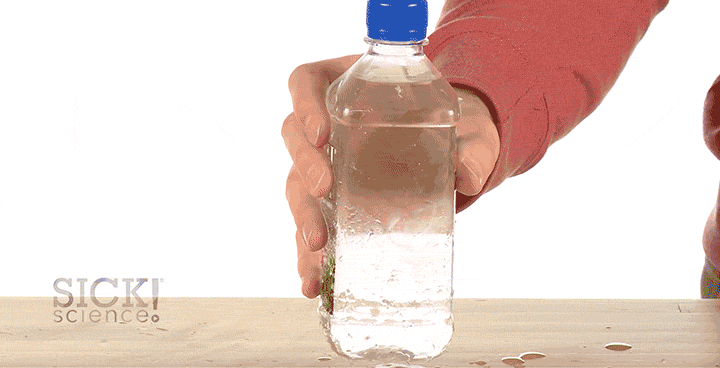
You put a plastic bottle of soda pop or water in the freezer for a few minutes to get it ice cold. It’s still a liquid when you take it out to enjoy but the second you twist the cap, the liquid instantly turns to slush! The process is amazing to watch but hard to repeat. This is a great illustration of how supercooled liquids defy freezing even at temperatures well below their freezing points. You’ll need some ice, salt, and several unopened plastic bottles of purified water to attempt this science demo. It’s cool… below-the-freezing-point cool!
But first…
If this happens to work on your very first attempt, go buy a lottery ticket! You have to be patient and understand that all of the measurements of time, ice, water, and rock salt are summaries of what has worked for others. Shoot a video of every attempt you make to document your hits and misses – and plan on several misses, too. When the ice crystals do begin to form in the water as planned, expect to hear lots of spontaneous screams and cheers coming from – you! It really is cool. Just remember: NO glass bottles!
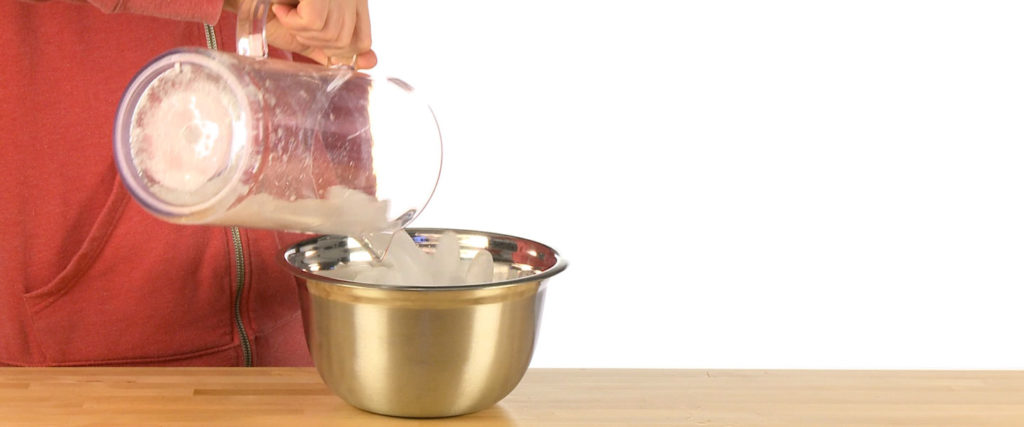
Nearly fill the container with ice.
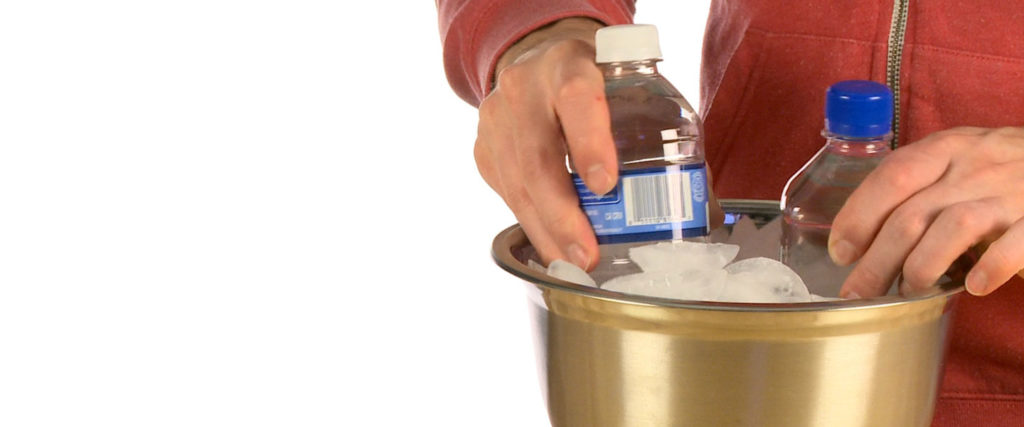
Shove two refrigerated, plastic water bottles deeply into the ice. Keep them close to the center of the bowl but keep each surrounded by and buried in ice as much as possible.
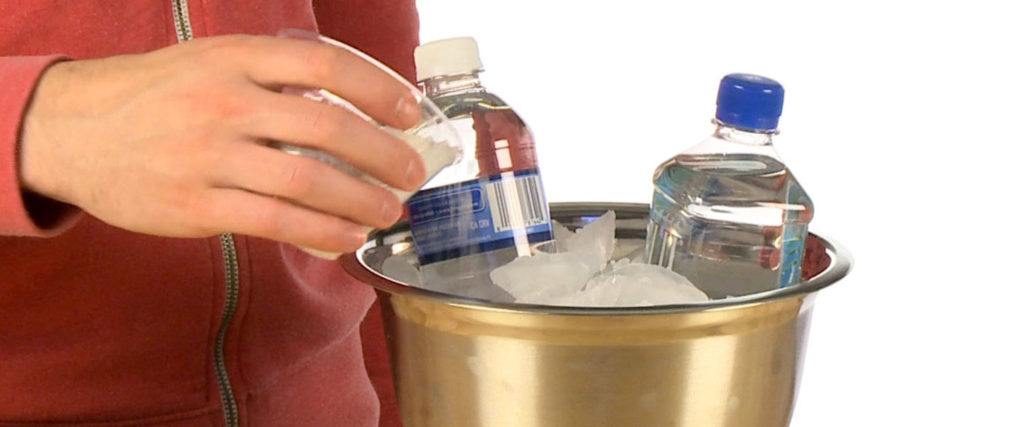
Scatter a generous amount of rock salt all over the surface of the ice.
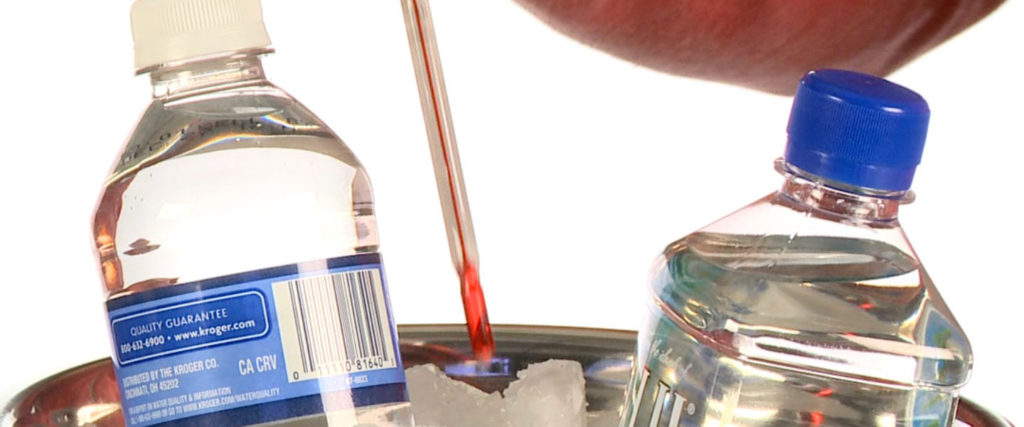
Insert the thermometer into the ice between the bottles. Monitor the temperature. Over the next half-hour, the temperature will fall slowly. Add ice and salt to the container as needed to keep the bottles buried in it. Watch that thermometer!
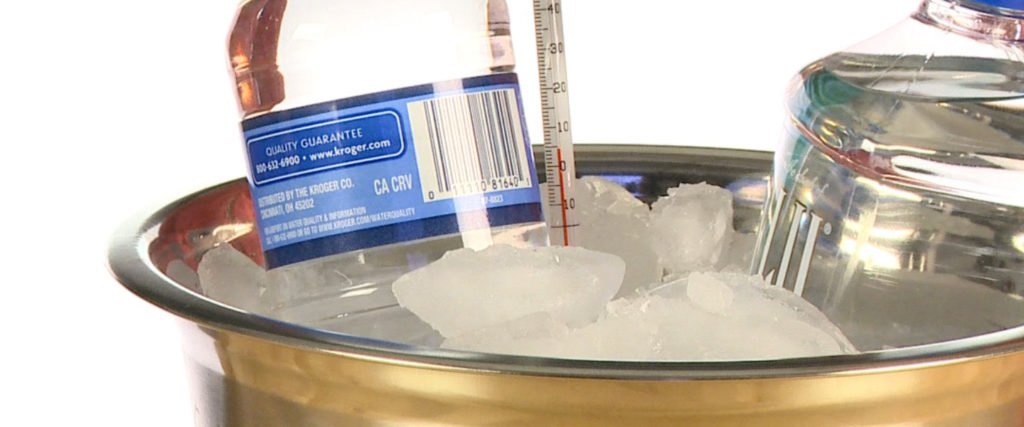
The temperature in the bowl needs to drop to 17℉ (-8℃). If the water gets too much colder, it may freeze prematurely.
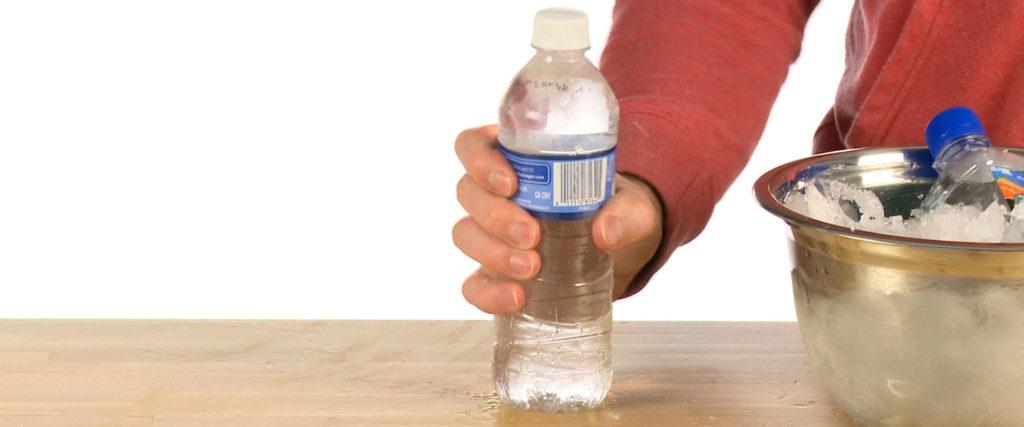
After the water has been this cold for 10 minutes (and is still a liquid), gently remove a bottle from the ice/salt mixture. Strike the bottle sharply against the table. Ice crystals may immediately form near the top of the bottle and quickly move down through the liquid. Carefully remove the second bottle and twist open the cap. The same instant freezing will likely occur from the top down.
You used salt and ice to drop the temperature in the chill mixture below the normal freezing point of water. This is called “freezing point depression.” This very cold salt water can be used to cool other water and soda samples below their normal freezing point to discover which of them can be be supercooled. You might also discover which samples freeze at their normal freezing points no matter what.
When water freezes, the molecules come together in a very orderly way and form a crystalline structure. Because of this, water molecules as ice have less energy than water molecules as liquid. That means to go from liquid water to solid water, the molecules have to lose heat energy. In other words, as supercooled water freezes when you tap it or open it, it also warms up the rest of the water. This heating may allow only ten or twenty percent of the water to freeze and that accounts for slush being in the bottle instead of it being a solid chunk. The formation of ice crystals happens very quickly but heat flows slowly in water.
When water is cooled to its freezing point, ice crystals can begin to collect in the water. Like snow flakes, these crystals need something on which to grow and they use microscopic impurities in the water or locations on the bottle to do just that. If you work with really pure water and cool it slowly to produce supercooled water as a liquid, there’s different outcome. When an impurity (e.g. an ice crystal) is added to this supercooled pure water, it speeds up the crystallization process even more. The water instantly freezes solid with no slush in it anywhere. This is called “snap freezing.”
If you supercool soda water or soda pop, there are some other factors to consider. When soda pop is produced, large quantities of additives (like sugar, colors, and flavorings) as well as carbon dioxide (CO2) are pumped into water. These additives are called solutes and when solutes are added to a liquid such as water (the solvent), the freezing point of the water drops. By lowering the freezing point, soda has to reach a much colder temperature than plain water to freeze. The carbon dioxide gas in the soda is maintained only as long as the bottle is kept sealed. When the bottle is opened and you hear that “whoosh” of gas and foam rushing out of the bottle, the concentration of solutes in the water quickly goes down. The freezing point goes up and, without all those solutes, the soda freezes very quickly. Of course, all those bubbles provide places for the ice crystals to begin forming, too. You can test this by tapping a supercooled bottle of soda pop without opening it. Bubbles will form after the tap and freezing will likely occur.